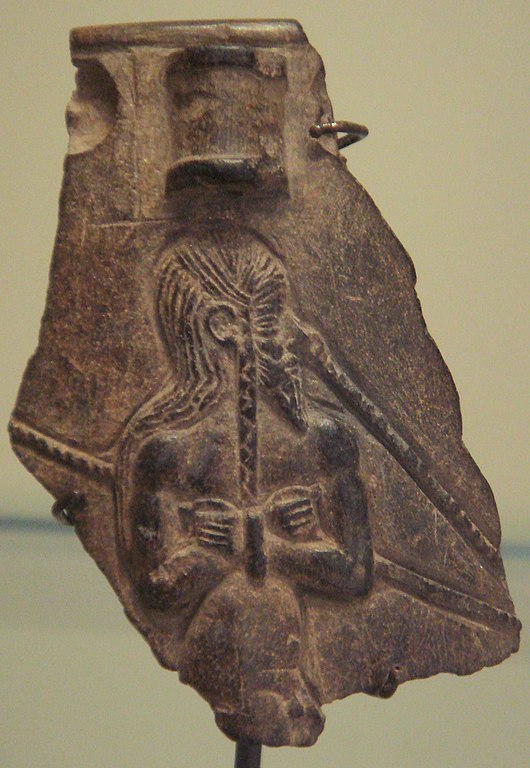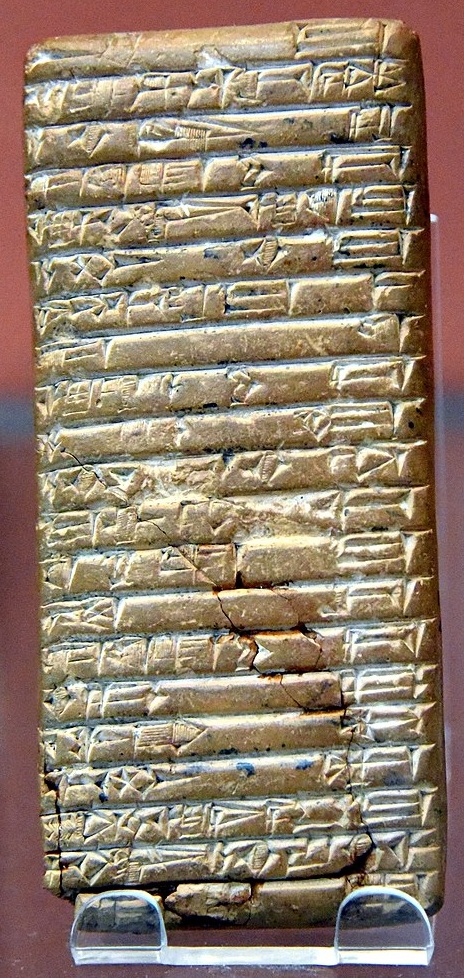
| GUTIAN PEOPLE Gutians :
Tablet of Lugalanatum
Gutium Approximate location of Gutium :
Top : An inscription dated c. 2130 BC, mentioning the Gutians: "Lugalanatum, prince of Umma ... built the E.GIDRU [Sceptre] Temple at Umma, buried his foundation deposit [and] regulated the orders. At that time, Siium was king of Gutium." The name gu-ti-umKI appears in the last column. Louvre Museum.
Bottom : Approximate location of original Gutium territory.
The Guti or Quti, also known by the derived exonyms Gutians or Guteans, were a nomadic people of West Asia, around the Zagros Mountains (Modern Iran) during ancient times. Their homeland was known as Gutium (Sumerian: Gu-tu-umki,Gu-ti-umki).
Conflict between people from Gutium and the Akkadian Empire has been linked to the collapse of the empire, towards the end of the 3rd millennium BC. The Guti subsequently overran southern Mesopotamia and formed the Gutian dynasty of Sumer. The Sumerian king list suggests that the Guti ruled over Sumer for several generations following the fall of the Akkadian Empire.
By the 1st millennium BC, usage of the name Gutium, by the peoples of lowland Mesopotamia, had expanded to include all of western Media, between the Zagros and the Tigris. Various tribes and places to the east and northeast were often referred to as Gutians or Gutium. For example, Assyrian royal annals use the term Gutians in relation to populations known to have been Medes or Mannaeans. As late as the reign of Cyrus the Great of Persia, the famous general Gubaru (Gobryas) was described as the "governor of Gutium".
Origin :
The Gutians capturing a Babylonian city, as Akkadians are making a stand outside their city. 19th century illustration Little is known of the origins, material culture or language of the Guti, as contemporary sources provide few details and no artifacts have been positively identified. As the Gutian language lacks a text corpus, apart from some proper names, its similarities to other languages are impossible to verify. The names of Gutian-Sumerian kings suggest that the language was not closely related to any languages of the region, including Sumerian, Akkadian, Hurrian, Hittite and Elamite.
W. B. Henning suggested that the different endings of the king names resembled case endings in the Tocharian languages, a branch of Indo-European known from texts found in the Tarim Basin (in the northwest of modern China) dating from the 6th to 8th centuries BC, making Gutian the earliest documented Indo-European language. He further suggested that they had subsequently migrated to the Tarim. Gamkrelidze and Ivanov explored Henning's suggestion, as possibly supporting their proposal of an Indo-European Urheimat in the Near East. However, most scholars reject the attempt to connect two groups of languages, Gutian and Tocharian, that were separated by more than two millennia.
According to some data, the Gutians were a Hurrian tribe.
History
:
Initially, according to the Sumerian king list, "in Gutium ... no king was famous; they were their own kings and ruled thus for three [or five] years". This may indicate that the Gutian kingship was rotated between tribes/clans or within an oligarchical elite.
25th to 23rd centuries BC :
King Anubanini of Lullubi, holding an axe and a bow, trampling a foe. Anubanini rock relief, circa 2300 - 2000 BC. Sar-I Pul, Iran. The Gutians "were close neighbours, hardly to be distinguished" from the Lullubi The Guti appear in texts from Old Babylonian copies of inscriptions ascribed to Lugal-Anne-Mundu (fl. circa 25th century BC) of Adab as among the nations providing his empire tribute. These inscriptions locate them between Subartu in the north, and Marhashe and Elam in the south. They were a prominent nomadic tribe who lived in the Zagros mountains in the time of the Akkadian Empire.
Sargon the Great (r. circa 2340 – 2284 BC) also mentions them among his subject lands, listing them between Lullubi, Armanum and Akkad to the north; Nikku and Der to the south. According to one stele, Naram-Sin of Akkad's army of 360,000 soldiers defeated the Gutian king Gula'an, despite having 90,000 slain by the Gutians.
The epic Cuthean Legend of Naram-Sin claims Gutium among the lands raided by Annubanini of Lulubum during the reign of Naram-Sin (c. 2254–2218 BC). Contemporary year-names for Shar-Guni / Shar-kali-sharri of Akkad indicate that in one unknown year of his reign, Shar-kali-sharri captured Sharlag king of Gutium, while in another year, "the yoke was imposed on Gutium".
Prominence during the early 22nd century BC :
La-erabum, "Great King of Gutiim"
Votive macehead of Gutian king La-erabum, and its inscription "La-eraab, great King of Gutiim" (la-e-ra-ab da-num lugal gutiim). The name is quite damaged, and was initially read "Lasiraab". British Museum (BM 90852) As the Akkadians went into decline, the Gutians began a campaign, decades-long of hit-and-run raids against Mesopotamia. Their raids crippled the economy of Sumer. Travel became unsafe, as did work in the fields, resulting in famine. The Gutians eventually overran Akkad, and as the King List tells us, their army also subdued Uruk for hegemony of Sumer, in about 2147–2050 BC. However, it seems that autonomous rulers soon arose again in a number of city-states, notably Gudea of Lagash.
The Gutians seem also to have briefly overrun Elam at around the same time, towards the close of Kutik-Inshushinak's reign (c. 2100 BC). On a statue of the Gutian king Erridupizir at Nippur, an inscription imitates his Akkadian predecessors, styling him "King of Gutium, King of the Four Quarters".
The Weidner Chronicle (written c. 500 BC), portrays the Gutian kings as uncultured and uncouth :
Naram-Sin destroyed the people of Babylon, so twice Marduk summoned the forces of Gutium against him. Marduk gave his kingship to the Gutian force. The Gutians were unhappy people unaware how to revere the gods, ignorant of the right cultic practices. Utu-hengal, the fisherman, caught a fish at the edge of the sea for an offering. That fish should not be offered to another god until it had been offered to Marduk, but the Gutians took the boiled fish from his hand before it was offered, so by his august command, Marduk removed the Gutian force from the rule of his land and gave it to Utu-hengal.
Decline from the late 22nd century BC onwards :
Utu-Khegal, Prince of the Sumerian city of Uruk, praying for victory against the Gutian king Tirigan.
In his Victory Stele, Utu-hengal wrote about the Gutians :
Utu-hengal victory stele, where he describes the Gutians he vanquished as "the fanged snake of the mountain ranges". Louvre Museum, AO 6018 Gutium, the fanged snake of the mountain ranges, a people who acted violently against the gods, people who the kingship of Sumer to the mountains took away, who Sumer with wickedness filled, who from one with a wife his wife took away from him, who from one with a child his child took away from him, who wickedness and violence produced within the country..." -
Victory Stele of Utu-Hengal
A Babylonian text from the early 2nd millennium refers to the Guti as having a "human face, dogs’ cunning, [and] monkey's build".
Biblical scholars believe that the Guti may be the "Koa" (qôa), named with the Shoa and Pekod as enemies of Jerusalem in Ezekiel 23:23, which was probably written in the 6th century BC. Qôa also means "male camel" in Hebrew, and in the context of Ezekiel 23, it may be a deliberate, insulting distortion of an endonym such as Quti.[citation needed]
Physical appearance :
Barbarian prisoner of the Akkadian Empire, nude, fettered, drawn by nose ring, with pointed beard and vertical braid. 2350 - 2000 BC, Louvre Museum
Letter of a certain Ishkun-Dagan about the depredations of the Gutians: "Work the field and guard the flocks! Just don't say to me: “It is (the fault of) the Gutians; I could not work the land"... British Museum
Source :
https://en.wikipedia.org/ |
|||||||||||||||||||||||||||||||||||||||||||||
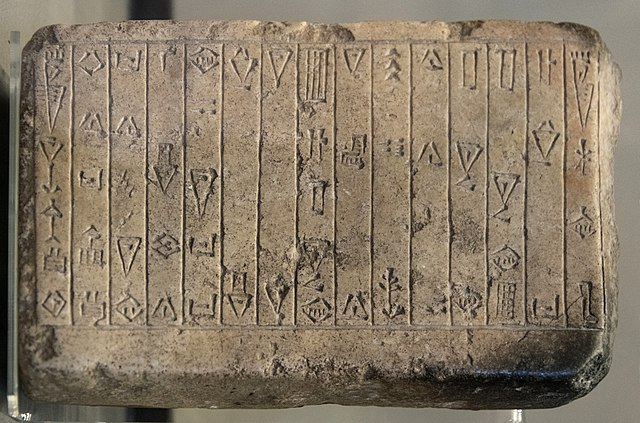
.jpg)
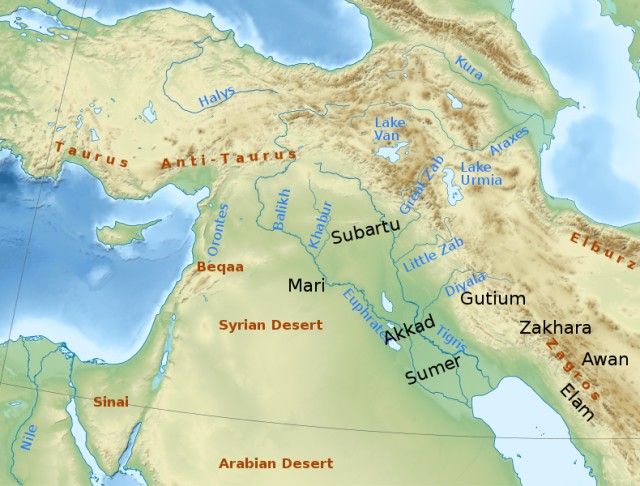
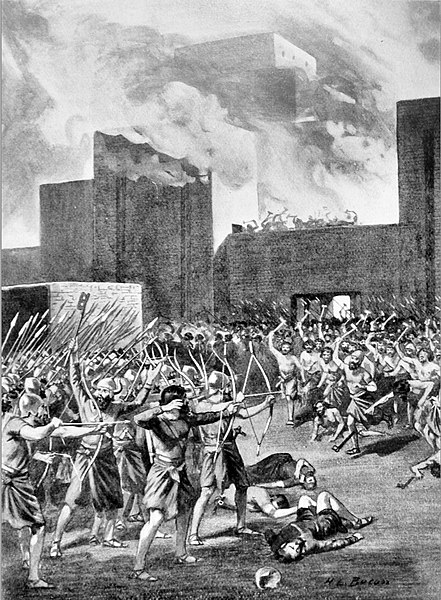
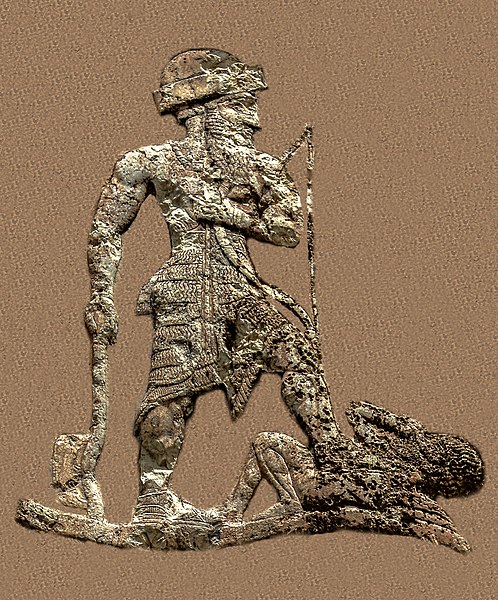
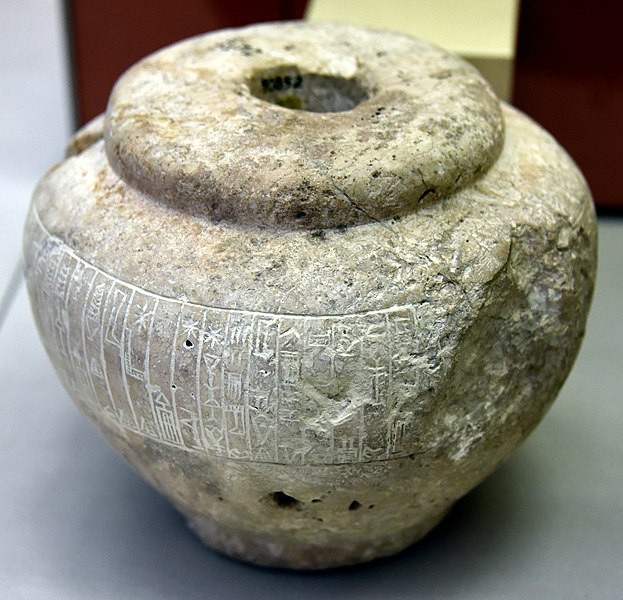
.jpg)
.jpg)
